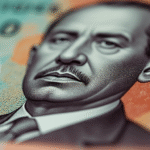China’s Strategic Summit with Latin American and Caribbean Partners
This week, China will host a summit with its key trading partners from Latin America and the Caribbean, aiming to strengthen influence and partnerships in the region as both China and the US work to de-escalate their trade war.
Key Participants and Trade Figures
- High-ranking Latin American and Caribbean officials, including the presidents of Brazil, Colombia, and Chile, will attend the Tuesday meeting in Beijing.
- China’s President Xi Jinping will deliver a speech at the summit. This marks his first address to the forum in a decade.
Trade and Geopolitical Context
Bilateral trade with the Latin American bloc reached $427 billion between January and September 2024, according to Chinese data.
The China-CELAC forum challenges the historical US geopolitical and economic dominance in the region, which the Trump administration attempted to counter. The summit follows a weekend of high-stakes trade talks between the US and China, concluding with positive outcomes.
US officials claimed a “deal” to reduce the US trade deficit, while Chinese leaders stated that both sides reached an “important consensus” and agreed to launch another joint economic dialogue forum.
China has been attempting to build a global coalition against what it calls the “abuse of tariffs” by the US. Since both nations imposed over 100% tariffs on each other last month, China has reached out to Southeast Asia and Central Asia, urging its trading partners to stand against “unilateral harassment” and support multilateralism.
China also made progress on trade issues with the European Union, agreeing to discuss setting minimum prices for electric vehicles manufactured in China.
China-CELAC Forum: Deepening Dialogue and Cooperation
The China-CELAC forum serves as an intergovernmental cooperation platform between China and Latin American and Caribbean countries, deepening dialogue on trade, investment, and infrastructure cooperation within China’s Belt and Road Initiative framework.
One of the main tensions between China and the US in the region has been the Panama Canal, which President Donald Trump threatened to reclaim.
The $23 billion agreement by US conglomerate BlackRock to acquire CK Hutchison’s port operations near the Panama Canal, which Trump hailed as a “reclaim,” sparked concerns in Beijing and prompted regulatory review.
Commodity Trade Focus
China is Latin America’s primary buyer of raw materials, such as copper, iron ore, and minerals. This week, China’s trade with Brazil might take center stage.
Coinciding with the summit, Beijing will also host a state visit by Brazilian President Luiz Inácio Lula da Silva on Tuesday, with over a dozen bilateral agreements expected.
China is Brazil’s largest market, with trade dominated by raw materials like soybeans, iron ore, and crude oil. Last year, China purchased $37 billion worth of soybeans from Brazil, making it the primary supplier to China as the world’s largest soja buyer diversifies and moves away from the US.
Last week, China resumed importing Brazilian soja from five companies previously suspended for quarantine reasons.
Chilean President Gabriel Boric confirmed his attendance at the Beijing summit and plans to meet with Xi.
During the meeting, interests of Chinese companies in Chile’s second-largest lithium producer might be discussed after Tsingshan, a metallurgical group, expressed continued interest in Chile’s lithium investment opportunities.
Increased cooperation in infrastructure could also be highlighted, as the high-level meeting paves the way for the BRICS summit in Rio de Janeiro in July.
Unlike Panama, which left the Belt and Road Initiative earlier this year, Colombia aims to join China’s flagship program, following Peru’s steps. Peru inaugurated its Chancay port linked to the Belt and Road Initiative half a year ago to enhance maritime connectivity between China and South America.






